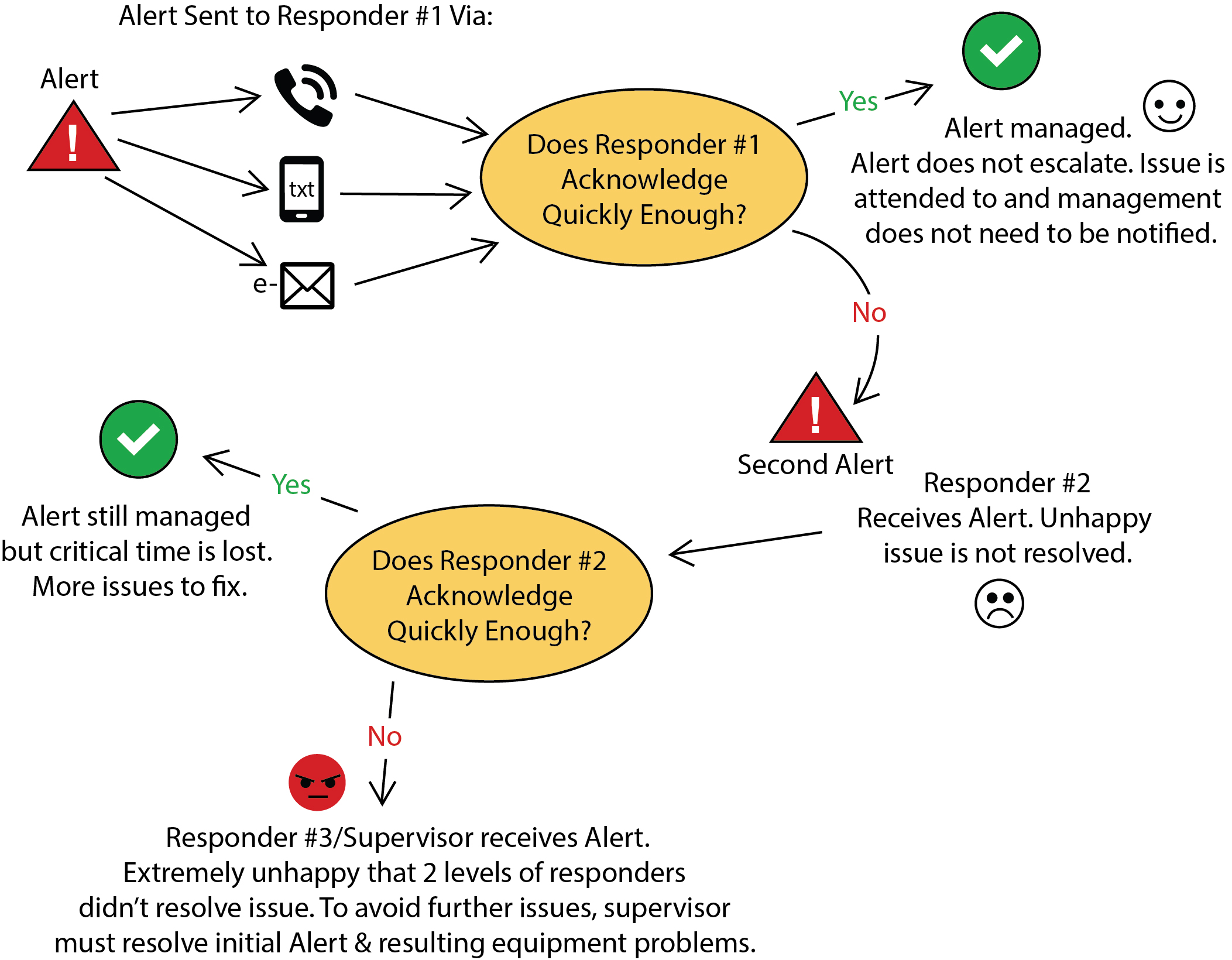Alert System Features: “I Get Calls on My Phone. What Else Would I Need?”
Editor’s Note: This article was originally published in January 2020 and updated in September 2025 to reflect the latest best practices and cloud-based SaaS solutions.
Why the Right Alert System Matters
An industrial alert system should do more than just ring your phone—it should deliver the right information, to the right people, at the right time. In today’s fast-moving world, every second counts. Many modern companies have evolved towards utilizing cloud-based solutions to manage alerts for countless purposes. The best systems provide flexibility, context, and reliability, helping your team stay ahead of issues before they become costly problems.
Here are the essential features to consider when choosing your alert system.
Seamless Integration with SCADA, PLC, and more
For industrial applications, an alert system should be able to integrate easily and reliably with all your existing equipment and automation, which includes PLC and SCADA packages. There are two basic methods of accomplishing this. Look for solutions that support both hardware connections and direct remote communications with your automation software, ensuring you have options as your needs grow.
Multi-Channel Notifications (Text, Email, and Voice)
Phone calls alone aren’t enough anymore. Modern devices can do much more than simple phone calls, and your alerts should utilize these features. A modern system should notify your team across multiple channels—voice, text, and email—so that critical alerts never get missed. Text and email alerts can also be forwarded to other team members instantly, keeping everyone in the loop.
Smart Alert Management
The right platform should allow you to:
– Set user permissions for managing alerts and alert thresholds
– Add or remove personnel from notification groups quickly
– Customize how alerts are delivered to each user
This level of control ensures alerts are always targeted and actionable.
Group-Specific Alerts
Not every alert is relevant to every person. Operators may need process-related alerts, while maintenance staff care about equipment failures. Group-based alerts ensure people only receive what is relevant to them, cutting through the noise.
Acknowledgement and Escalation
Critical alerts should never go unanswered. Look for systems that allow acknowledgements directly from mobile devices—whether by text, voice, or email—and escalate up the chain of command automatically if the first responder doesn’t reply.
(Click on escalation graphic to enlarge and zoom)
Reliable and Timely Delivery
On-premise-only systems are vulnerable to the same failures they’re meant to report (like power or phone outages). Cloud-based SaaS alert systems provide the reliability and redundancy you need, ensuring critical alerts still reach you as soon as possible, even when local infrastructure is down.
Time-Based Alerts
A non-critical issue with a pump can wait until normal working hours to be addressed. Personnel that work certain shifts only need to know about the alert during scheduled work time. A strong alert system should let you schedule alerts by time of day or day of week, so non-critical issues wait for normal working hours, while critical ones reach the right people instantly.
Alert History and Details
An alert solution should include more than just the bare minimum when sending notifications to personnel. It should also include who acknowledged it, when it was acknowledged, as well as when alert status returned to normal. Alert history should be in a centralized location to make it easier for a person to decide how to solve the issue, who needs to solve it, or if it can wait. This history provides a valuable record for troubleshooting, compliance, and continuous improvement. Read our case study about the issues that arose when a municipality relied on a notification system with only a general alarm.
Scalability and Future-Proofing
Your operations will grow—and your alert system should grow with them. Hardwired solutions are more limited when it comes to easily or cost effectively adding more alerts. Cloud-based SaaS platforms make it easy to add users, alerts, and features without costly hardware replacements or downtime.
Follow us on
About The Author
The President and founder of Data-Command with over 25+ years of business development, 35+ years of automation, and 40+ years of software development experience. In 2005, Data-Command was born from his passion to provide information to municipalities and industry that would have a positive impact on their operations, and he has never lost this passion.


